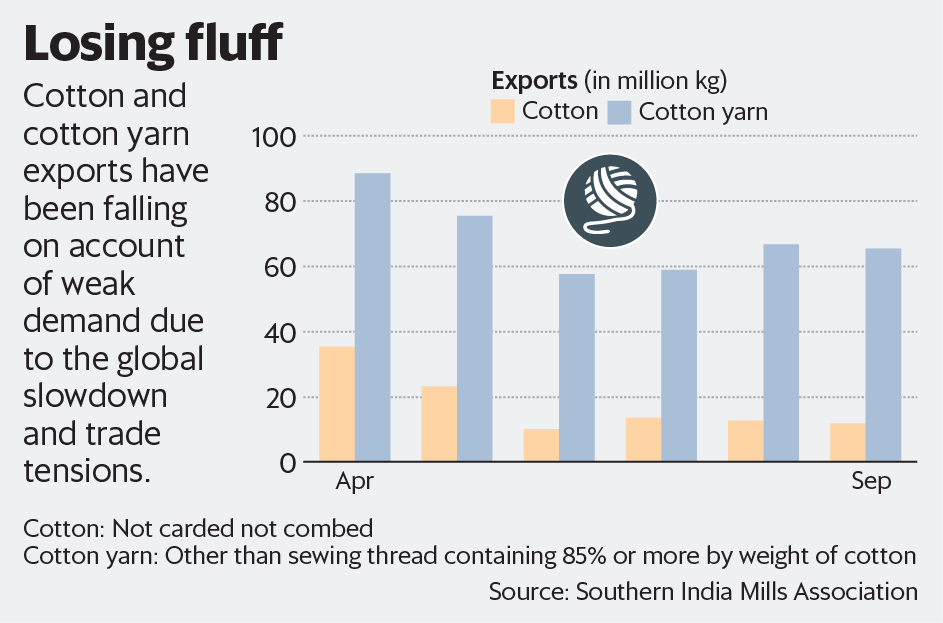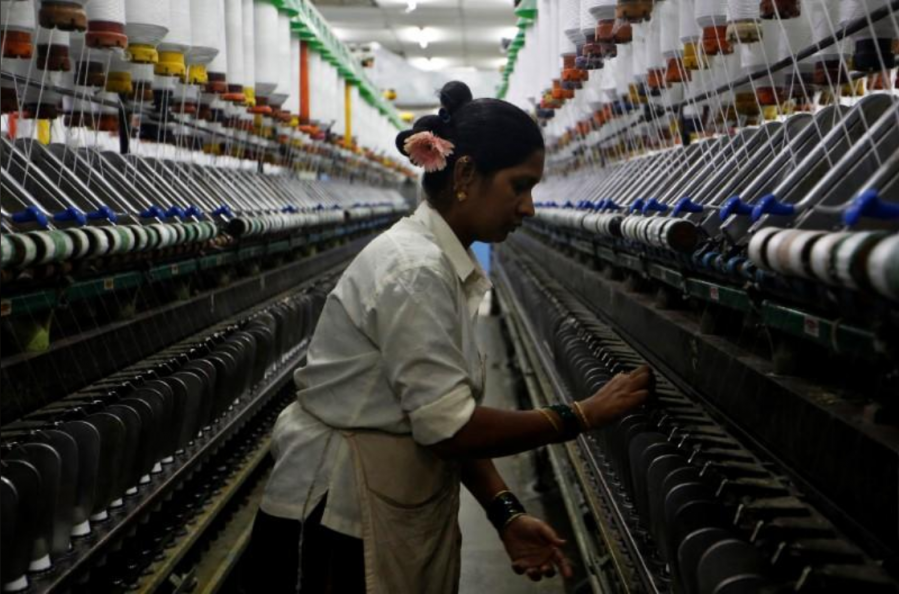- Cotton prices are down 8% since September and 16% lower from the high of 129 per kg touched in April
- Cotton Corporation of India estimates production to rise 13.6% year-on-year
The new cotton season from October 2019 to September 2020 ushers in hope of lower raw material costs for yarn mills. This could give a leg-up to profitability in the coming quarters amid weak exports.
Cotton Corporation of India estimates production to rise 13.6% year-on-year. Therefore, current cotton prices (Sankar-6 grade) are down 8% since September and 16% lower from the high of 129 per kg touched in April.

However, analysts reckon that mills would benefit from this drop in prices with a lag. Most of them are saddled with high-price cotton inventory, which eroded profitability in the last two- three quarters. “The spinning industry saw disruptions in production in Q2FY20 owing to reduced demand and volatility in cotton prices," said a recent report by India Ratings and Research Ltd.
Larger mills such as Ambika Cotton Mills Ltd, KPR Mill Ltd and Vardhman Textiles Ltd maintained operating margins at about 16-18%, but many small units faced high cotton prices. Shares of Vardhman Textiles and Ambika Cotton Mills have fallen 17% and 28%, respectively, in a year, while KPR Mill’s share price was buoyed by a recent buyback offer.
The yarn spinners’ plea to incentivize yarn exports is reasonable given weak exports is the biggest drag for the cotton textile industry. Cotton yarn exports fell to 66 million kg, from 89 million kg in April.
“US-China trade war halved yarn exports to China due to weak demand in the region. This was further aggravated by duty-free access allowed to Pakistan and Bangladesh by China. Meanwhile, demand in domestic markets has been impacted by cheaper yarn imports from Vietnam, Thailand and other South-east Asian countries by Indian fabric manufacturers," said Abhishek Rathi, senior analyst (corporate) at India Ratings.
Thus, there is a glut of yarn in the local market, which is suppressing prices. Although spinning mills are trying to offset this by developing new export markets, it will take time. In this backdrop, softening cotton prices could improve margins of spinners at least in a couple of quarters.
That said, the impact of minimum support prices and easing of trade tensions between the US and China may limit the decline in cotton prices.


